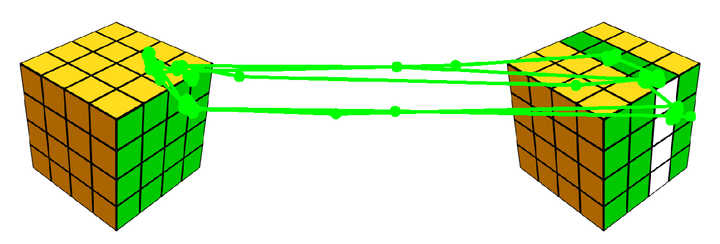Eye-tracking and pupillometry in psychological measurement of ability: Spatial thinking as an example

The ability of spatial thinking is an important factor of intelligence. It is related to educational success in mathematical, scientific, and technical domains. Furthermore, spatial thinking plays an important role in learning with multimedia as well as in understanding of complex visualizations. The ability of spatial thinking is measured with tasks demanding mental transformations of spatial structures. Such mental transformations are, for example, rotations of objects (mental rotation/
Spatial thinking tasks that are conventionally used are not standardized with respect to specific spatial thinking aspects. Studies show that these tests can be problematic if we consider in which ways a person tries to solve a task (going beyond the measurement of accuracy and reaction times). Some spatial tasks can be solved without any mental spatial transformation. Individuals solve them by applying analytical strategies, e.g., by strategic exclusions. Hence, it is important to reveal the actual solving strategies of participants to improve validity and efficiency. Does a person recognize or systematically compare relevant parts of pictures in a complex visual task, and does the person apply the same strategy to different items? Gaze patterns are able to deliver valuable insights in such research questions.
However, the standard spatial thinking tests are limited if gaze patterns are to be analyzed. For example, the items are heterogeneous, i.e., there are not many items included in these tests that have the same construction principle and difficulty. To overcome this problem, new tests for spatial thinking were developed. This was done for the spatial thinking factor visualization and for the spatial thinking factor spatial relations. The new visualization test (R-Cube-Vis Test) consists of six difficulty levels with equally structured, homogenous items. It has been validated with several standard tests (e.g., Paper Folding Test, Mental Rotation Test, and further tests from intelligence tests). Current studies aim to identify the potential of eye movements, the resulting gaze patterns, as well as the solving strategies in order to predict the ability of spatial thinking with these additional measures. Moreover, further indicators are considered, including pupillometric measures indicating cognitive workload.
Contact: Dr. Benedict C. O. F. Fehringer
Related publication:
Fehringer, B. C. O. F. (2019). The diagnostic potential of eye tracking and pupilometry in the context of spatial thinking. Doktorarbeit, Universität Mannheim, Mannheim.